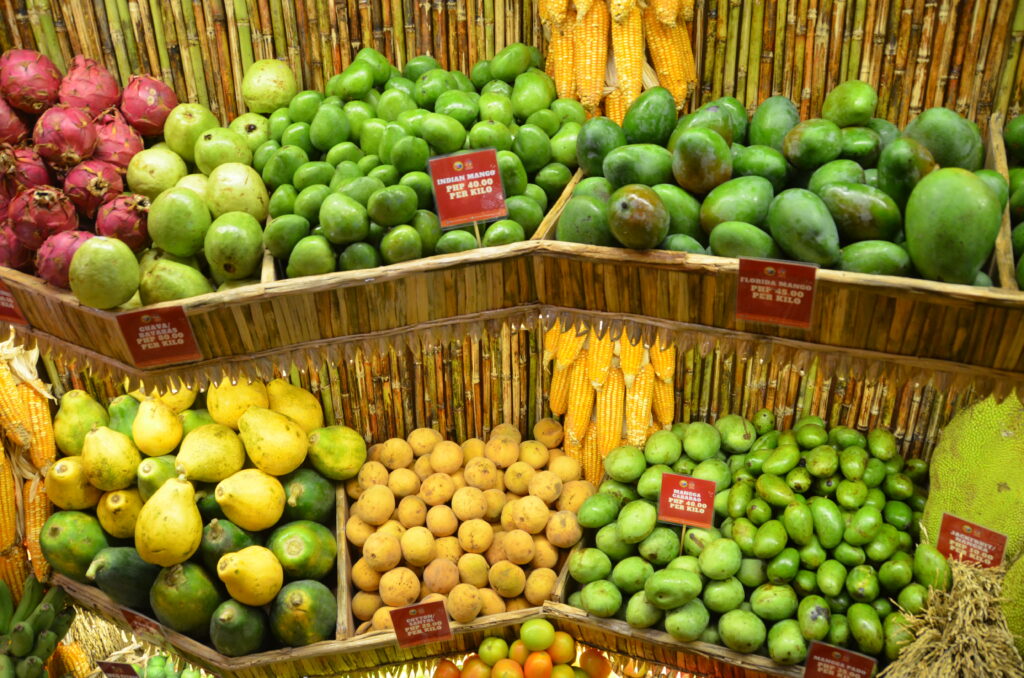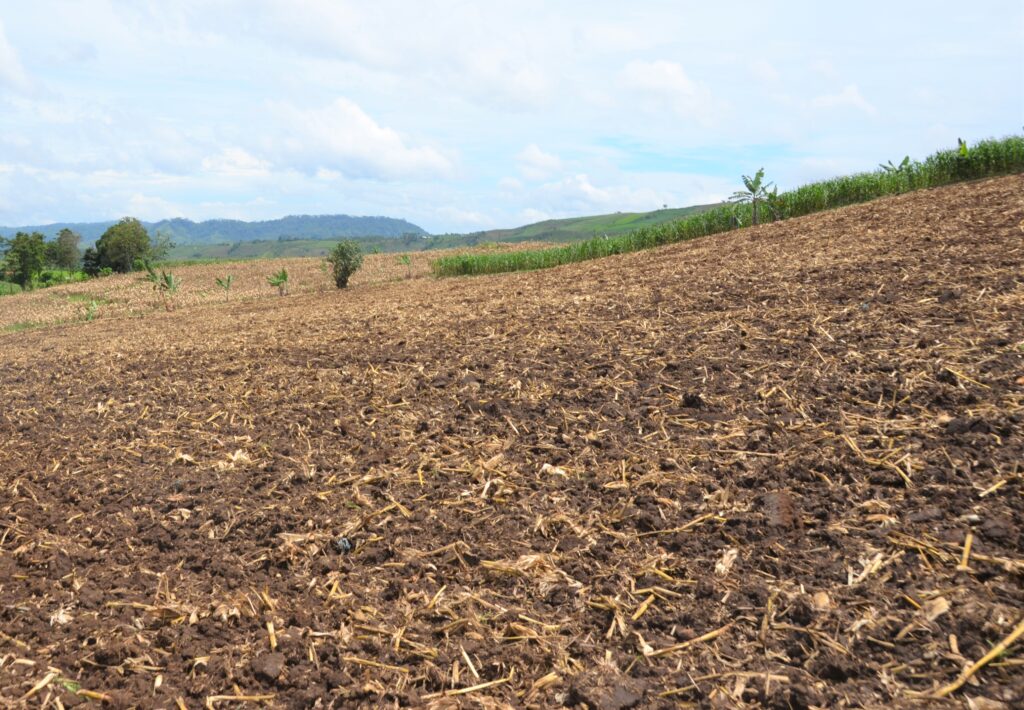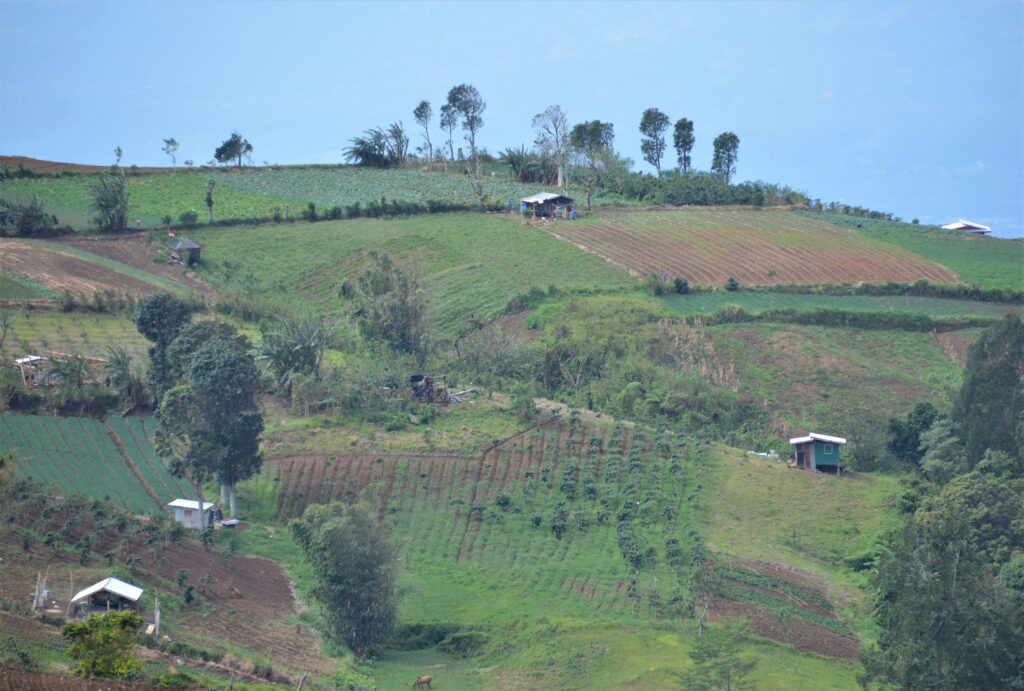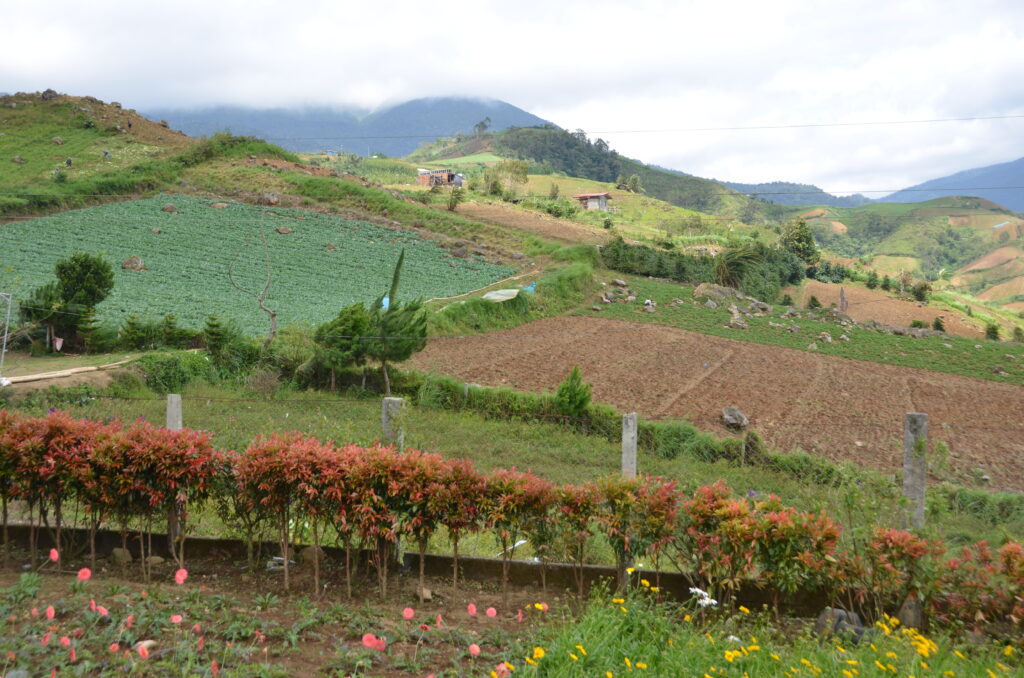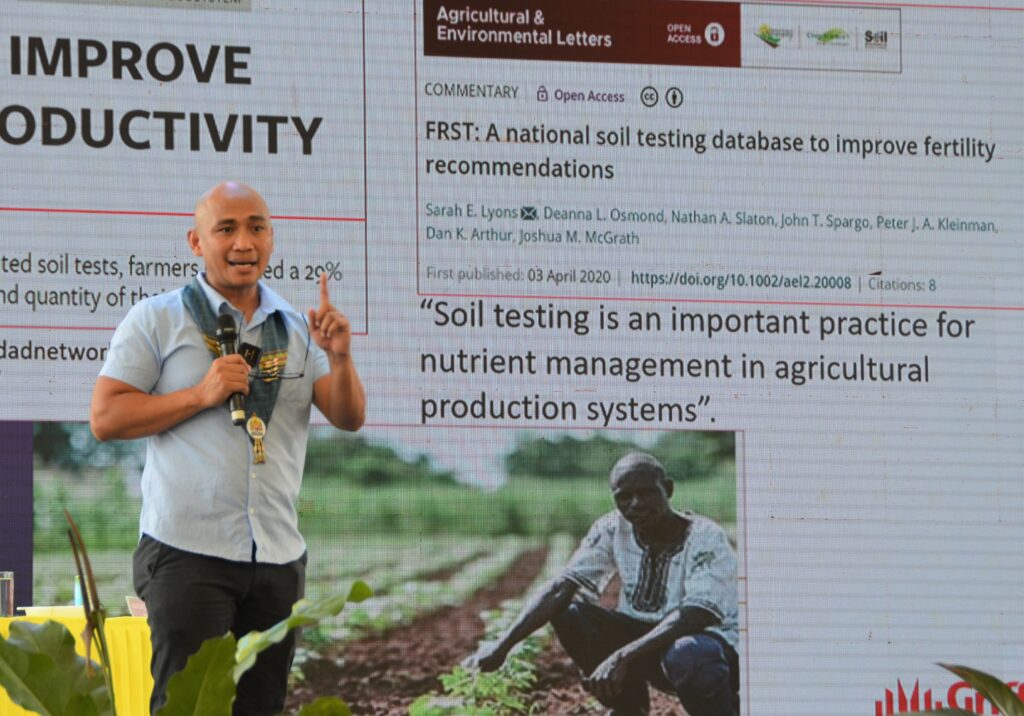ext and Photos by Henrylito D. Tacio
“The soil is the great connector of life, the source and destination of all. It is the healer and restorer and resurrector, by which disease passes into health, age into youth, death into life. Without proper care for it we can have no community, because without proper care for it we can have no life.”
That statement came from Wendell Berry, author of The Unsettling of America: Culture and Agriculture.
In Biblical times, farmers used the land they had for six years. Every seventh year, however, the land was left untouched. It’s called sabbatical year, which is mandated by the Torah in the Land of Israel. It’s a great rest for the fields, so that the land could regenerate.
When farmers plant crops, the nutrients present in the soil are taken by the crops. If this goes on for several years, the land is soon devoid of nutrients. The nutrient requirements of the crops are not met from soil reserves until these reserves are replenished.
This is where fertilizers come into the picture. Without fertilizers, Mother Nature cannot immediately replenish the nutrients taken by crops in the soil. But these days, most farmers complain because of the high cost of this farm input.
Fertilizers are composed of main nutrients, macroelements, and microelements. When farmers are talking of complete fertilizer (14-14-14, for instance), they are talking of the main nutrients: nitrogen (N), phosphorus (P) and potassium (K).
Macroelements, the secondary nutrients, include calcium (Ca), sulfur (S), and magnesium (Mg). The microelements, thus completing the formulation, are zinc (Zn), copper (Cu), molybdenum (Mo), boron (B), manganese (Mn), and iron (Fe).
Topsoil – the link between the rock core of the earth and the living things on its surface – is the single most important resource on farmland, which is built up over time. Experts claim it takes 200 to 1,000 years to form 2.5 centimeters of rich topsoil.
On the average, farmlands are losing 2.5 centimeters of topsoil every 16 years, or 17 times faster than it can be replaced.
That’s the reason why Filipino farmers need to conserve and protect topsoil as it is the primary resource in crop production. “We need to get to know our soils: Healthy soils produce healthy food and healthy people, and also support a healthy environment,” says Dr. Johnvie B. Goloran, an agricultural and environmental scientist. “Knowing the health of your soil is worth investing in.”
He knows what he is saying. After all, he has a PhD in soil science and postdoctoral training in soil health and plant nutrition from Australia’s Griffith University and the Laguna-based International Rice Research Institute, respectively.
Perhaps, one of the reasons why farmers don’t harvest the optimum yield from their farms is because they just fertilize their crops without really knowing if they need them in the first place.
“Most farmers really don’t know their soils,” Dr. Goloran deplores. “Because of this, they lose the opportunity to design or develop a strategic program/practice suitable for their farm lands.”
If only farmers get to know the basic knowledge of their farms, particularly the soil where they are planting their crops, they can definitely lessen the farm inputs, thereby increasing their farm income.
To know what’s in the soil, all they have to do is to test it. The goal of soil testing is to provide farmers an accurate assessment of the soil’s fertility to make proper fertilizer recommendations. With the increasing awareness of fertilizer effects on environment quality, soil tests also can be used to determine where fertilizers or manure should not be applied.
“Soil testing gives you the critical information on the nutritional status of your farm,” Dr. Goloran says. “This means that farmers would be able to select what type and rate of fertilizers are suitable to maintain a good nutritional status of the soils and at the same time address the nutritional requirements of the crops.”
Farmers can have their soil tested through the Regional Soils Laboratories (RSLs) under the Department of Agriculture. “It would be great if they can do or analyze at least 8 to 12 available forms of soil nutrients,” he says.
Soil testing can really help farmers in optimizing their crop production. “The standard practice should be that farmers would get not just the soil test results but also a set of recommendations for the crop that they prefer to plant on their farms,” Dr. Goloran says.
The website of James Lind Institute (JLI) says fertilizers help plants become resilient against harmful plant pathogens, pests, and weeds. Elimination of diseases in plants increases the value in the harvest.
The use of animal manures as compost is as old as agriculture itself.
Farmers can use both organic and inorganic fertilizers to restore the fertility of their farmers. “We have to understand that organic and inorganic fertilizers are both food to crops,” he points out. “The former takes time as it needs to be mineralized before it will be taken up by the plants. The latter is already available for crop uptake.”
Farmers are also urged to understand the time element on the effects of both organic and inorganic fertilizers. “If their crops need urgent attention, farmers have an option which one to choose,” Dr. Goloran says. “One thing that I would like to emphasize, regardless of fertilizer sources, be it organic or inorganic, both require soil testing as a prerequisite, so that farmers would know the rate and type of fertilizer to be applied to their crops.”
Farmers should not devoid the fields of nutrients. They must be reminded of the popular saying which goes something like this: They don’t inherit the land from their parents; they just borrow it from their children’s children. – ###
